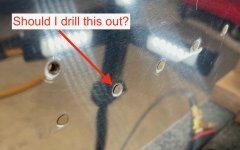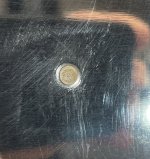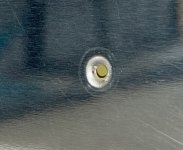Brand new builder here. I just started on the horizontal stabilizer and I'm bucking my first rivets into something other than a practice kit. The rivet shown below is sticking up more than I'd like. I can catch my fingernail on it. The shop head looks fine. Should I drill this rivet out so it sits flush in the dimple? Like everyone else, I want my airplane to be perfect but my concern is making things worse by drilling it out. I have good luck drilling out universal rivets with my rivet removal tool. Flush rivets? Not so much. Not bad, just not as clean as removing universal rivets.
Thoughts?
Thoughts?
Attachments
Last edited:







